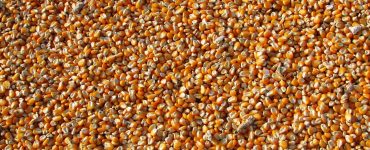Dermatitis is a name given to a variety of annoying skin conditions. Because the term is widely used, there are several factors that could be contributing to your skin problems.
Usually, however, dermatitis is accompanied with itching, redness, patches or flakes, and sometimes embarrassment.
Fortunately, the various forms of dermatitis can often be treated with simple home remedies and changes to your lifestyle and diet.
So, put down the expensive creams and try something simpler first.
There are three basic types of dermatitis: contact dermatitis, seborrheic dermatitis, and atopic dermatitis. Each has unique causes, symptoms, and treatments.
Contact dermatitis refers to skin irritations that are caused by being in contact with an irritant.
An allergic rash, poison ivy or oak, or a reaction to harsh perfumes or chemicals could all fall under this classification.
The severity of the reaction depends on how long you are exposed, if you are allergic, or how strong the irritant is.
The first step in solving contact dermatitis is determining what’s causing it and removing it from your environment. If it’s a skin allergy, you will want to obviously discontinue use of the culprit.
Washing your skin completely after first contact can also minimize the severity and duration of your symptoms.
Atopic dermatitis is also known as eczema. It is characterized by red, itchy, inflamed patches of skin.
While the exact cause is often unknown, it’s believed to be an autoimmune reaction and could be a response to food or environmental allergies.
One study found that children who consume fast food on a regular basis are far more likely to suffer from eczema. Though the study focused on children (where eczema is most common), it could prove true in adults too.
Determining the cause of your atopic dermatitis is the most difficult part. Because it has a tendency to flare-up from time to time, these periods of irritation could provide a clue as to the food, animal, climate, or condition that is aggravating it.
Dairy is a common culprit and even stress can play a role in its presence.
Natural Solutions for Contact and Atopic Dermatitis
Because contact and atopic dermatitis are very similar, so are many of the recommended natural remedies. Cool compresses and baths can sooth the irritation of both contact dermatitis and eczema.
You can soothe the itching even more by adding ground oatmeal or vinegar to the water. Another idea is to soak the affected area with a cool chamomile tea. This herb is known for its calming properties.
Both atopic and contact dermatitis can be soothed with aloe vera. While the plant is preferred, you can also find 100% aloe gels on store shelves. Clary sage oil is anther natural, topical solution.
Seborrheic dermatitis is unique in that it’s caused by an overabundance of sebum, or oil. In infants and small children, it’s often called “cradle cap” because of its presence on the scalp.
In adults, it’s known as dandruff and is characterized by yellowish scales or flakes.
An overabundance of sebum is often hereditary and difficult to prevent. Frequent washing with soap and water can minimize its appearance on your face and extremities. Using tea tree oil is also a good natural solution.
For infants, warm mineral oil applied gently to the scalp can help loosen the scales that can then be brushed away with the help of a gentle shampoo. Exposing the affected areas to sunlight can help dry the skin and reduce sebum production.
Dermatitis in all forms can be aggravating and embarrassing.
While traditional treatments include steroids and pharmaceuticals, many people have found natural treatments to be just as effective without all of the side effects.











